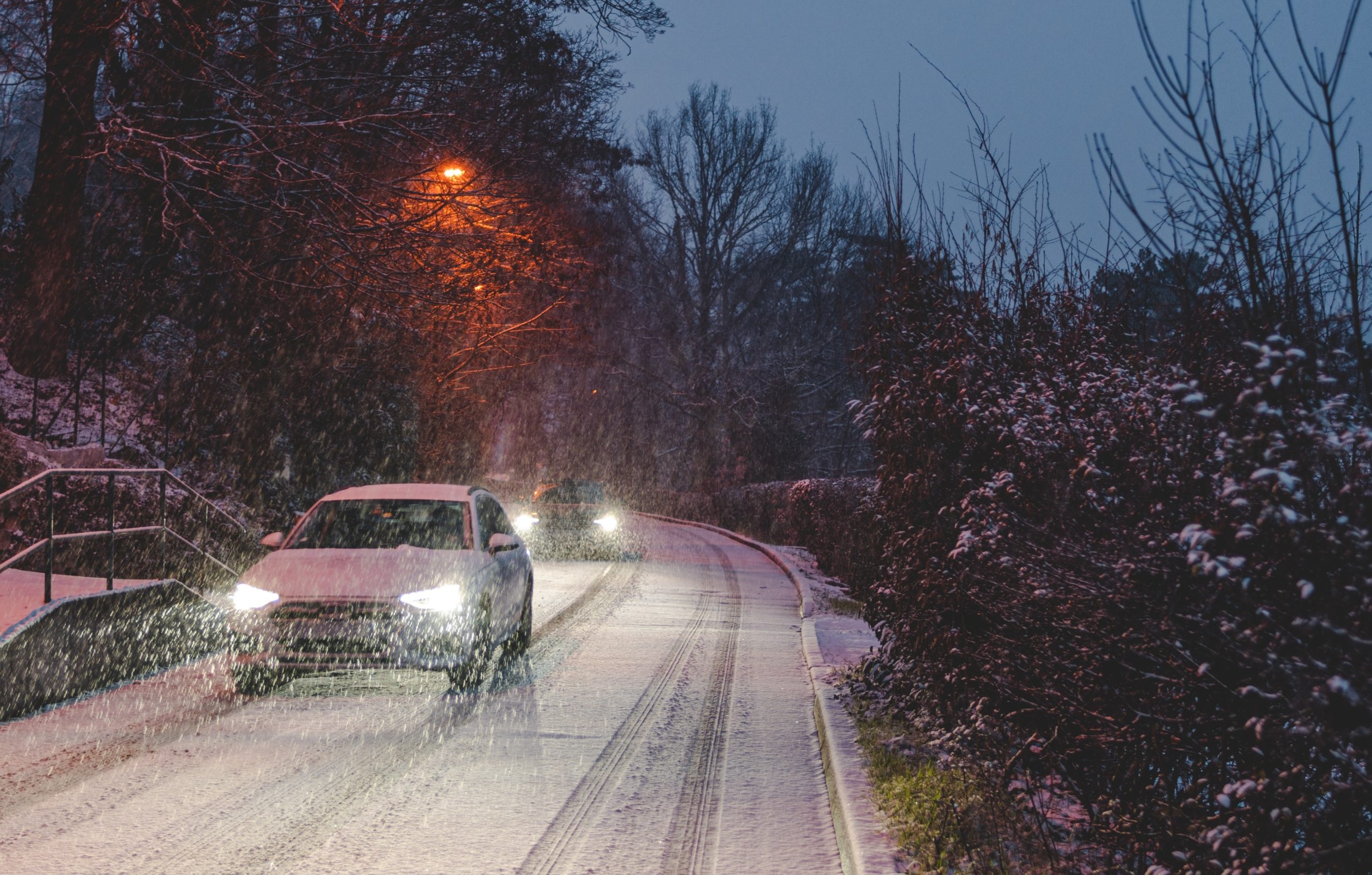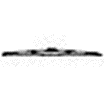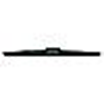|By Chilton Staff|
Fall’s shorter days and wetter weather can make it harder to see when driving. Don’t let your windshield stand in the way. Stay safe with these tips from automotive editor Tracy Junker and ChiltonLibrary.
How to check and clean wiper blades
It’s easy to forget about wiper blades until we need them. However, it’s best to evaluate wiper blades at least once every six months. Lift the wiper arm off the glass and feel the edge with your finger. If it is split, chipped, or rigid, replace it.
If the blades still seem fine but the windshield streaks when you use the wipers, clean them with windshield washer fluid or mild dishwashing soap and a paper towel, sponge, or clean cloth. Gently clean the wiper blade and the glass where the blade rests. Don’t forget to check them again in a couple of months.
When wipers are dirty, issues such as noise, film, or streaking can occur as the following chart excerpted from ChiltonLibrary shows.
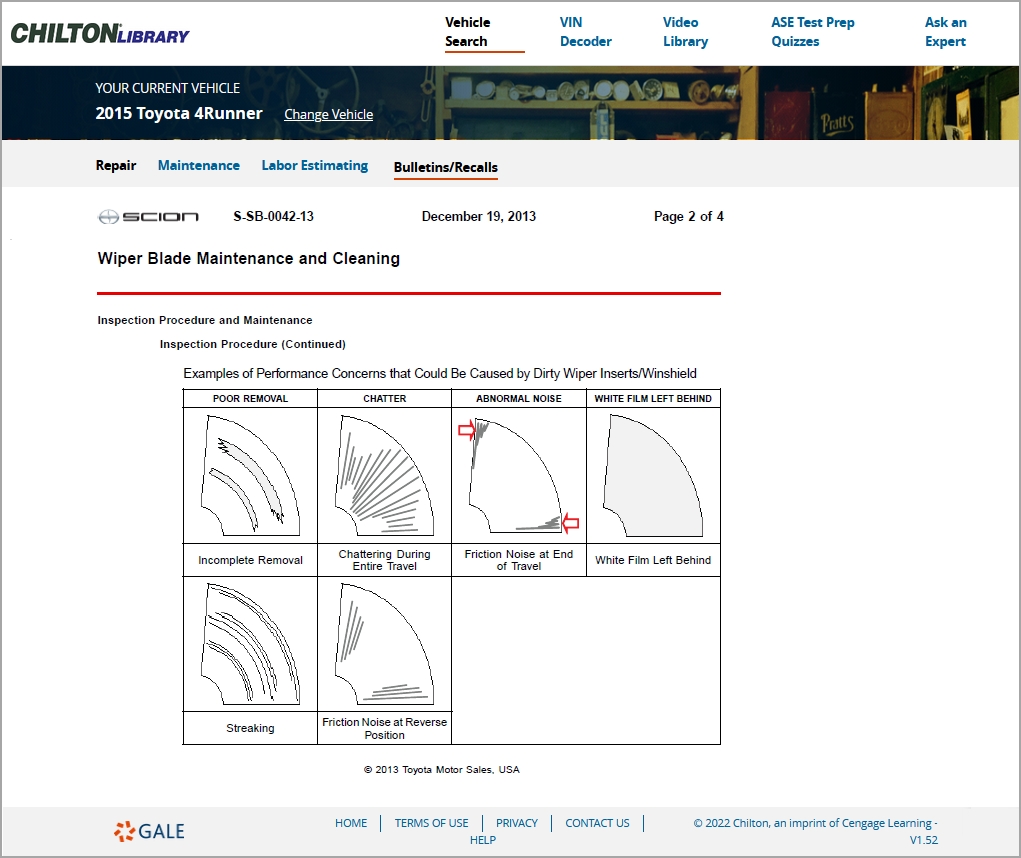
In areas with winter weather, typically change the wiper blades about every six months. It is usually best to replace both the front windshield wipers and any rear blade(s) at the same time as they have all been exposed to the same elements and debris. Check headlight wipers more frequently as they are subjected to more road debris than the windshield.
Better visibility isn’t the only reason to maintain your wipers; if the rubber edge that contacts the glass tears off the wiper assembly, the metal parts of the blade can scratch the glass, causing permanent damage.
Types of wiper blades
Rubber and silicone are two types of composites usually used for the blade itself.
Rubber blades – This is the most common type of wiper blade. The price can range widely. Most drivers will replace their wiper blades at least twice a year, so it is not necessary to get expensive ones in most cases.
Silicone blades – There are not many silicone wiper blades available. They are more expensive than typical rubber blades, but some people claim they last longer.
Two different styles of wiper blades, conventional and beam, are available. They both typically use the universal mounting system.
Conventional blades — Conventional wipers have a rubber blade that fits into a spring-tensioned frame assembly or bridge. This is the most common style of wiper blade.
Beam blades — Unlike conventional wipers, beam blades have no external frames. Instead, spring steel is incorporated into the rubber. Beam blades are advertised as providing more uniform pressure on curved windshields. Beam blades usually have a lower profile than conventional blades and are becoming more widely available.
Winter blades — Conventional wiper style, but with a boot that covers the entire wiper assembly to prevent snow buildup. Clearing snow and ice takes more effort than rain, while temperature changes and more use wear down wiper blades faster. Snow freezing on a car’s wiper blades, slowly clogging them until they are almost useless, can quickly become a safety issue.
Windshield wiper inserts are another option; they cost less but are usually difficult to install.
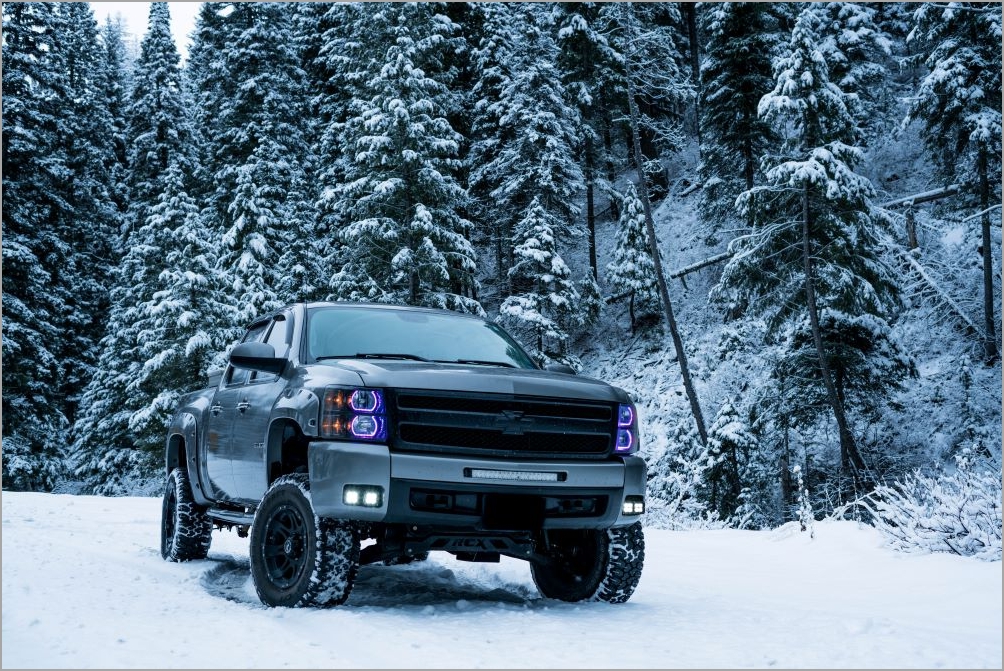
How a defroster helps clear the windshield
Modern vehicle defrost systems often use the air conditioning compressor to help dry the windshield and improve visibility. If a vehicle’s air conditioning system is not working properly, the defrost system will not keep the windshield clear efficiently.
Using settings that direct air at the floor can cause condensation to develop on the inside of the windows. If the air is directed across wet shoes or boots in the vehicle, that moisture will circulate throughout the vehicle and fog the windows, making it difficult to see out of the side and rear windows.
Rear window defrosters help clear the frost and fog from the rear window. These typically time out after a factory-designated amount of time, but the driver can usually reactivate them again almost immediately in order to ensure safe driving visibility.
Windshield washer fluid
While the wipers and defrosters are important, it is also important to remember to keep fluid in the windshield washer fluid reservoir. This fluid contains solvents and detergents designed to help keep the windshield clean and allow the wipers to work more efficiently. Deicer fluid usually contains chemicals that lower the freezing temperature of the washer fluid.
A study in the United Kingdom links the use of plain water as washer fluid to Legionnaires’ disease. The study found the bacteria in one out of five cars using only water in the washer fluid reservoir, but no bacteria was found in the vehicles with commercial windshield washer fluid in the reservoir.
Rain repellants
Glass treatment products force water to bead and roll off the glass. Apply these products using a clean, soft towel after thoroughly cleaning and drying the glass. After applying it, buff the glass with a different clean cloth, making sure to buff out all the haze. If the product is not buffed off the glass completely, it will make it harder to see through the glass. Buffing the glass again to finish removing the haze will restore clarity. These products will also help prevent ice and frost from sticking to the windows. When the beads of water become irregular in shape, the product is wearing off.
Windshields are essential to the vehicle’s structural integrity
Since the 1970s, the windshield and rear window have been integral to the vehicle structure. They are not just there to keep us safe from debris, bugs, and weather, but also to help support the vehicle’s rigidity.
A cracked windshield presents a safety risk. If the adhesive bond fails, it can reduce the effectiveness of the air bag system as well as compromise the roof’s structural integrity. If your vehicle sustains damage to the windshield or rear window, it’s best to have it checked by a professional.
Windshields with advanced safety feature cameras
Most new vehicles are equipped with cameras for advanced safety features, such as automatic emergency braking, collision avoidance, lane departure warning, and pedestrian avoidance. When there are windshield repairs or replacements, recalibrating the camera properly ensures the safety features protect you and your passengers as designed. We’ve excerpted part of a camera recalibration procedure: See Front View Camera Module Learn, below.
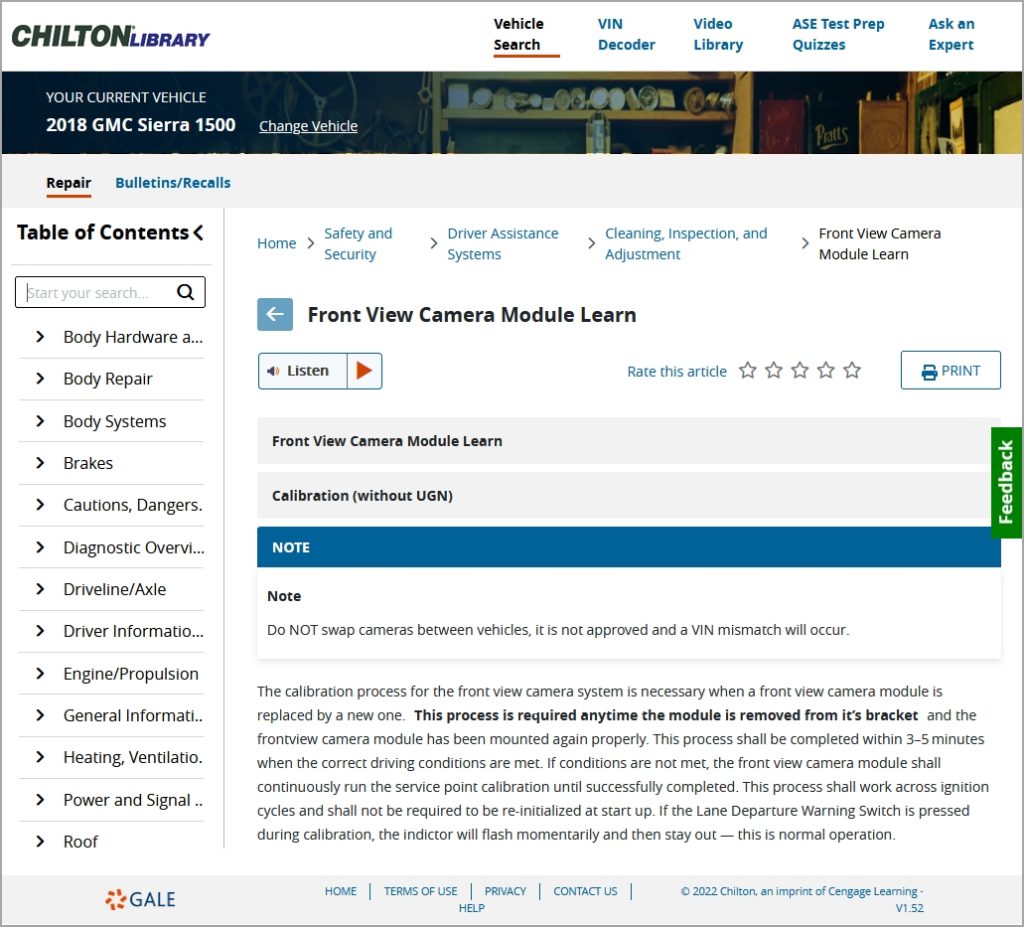
Not a ChiltonLibrary subscriber? Request a trial or contact your library consultant directly.


